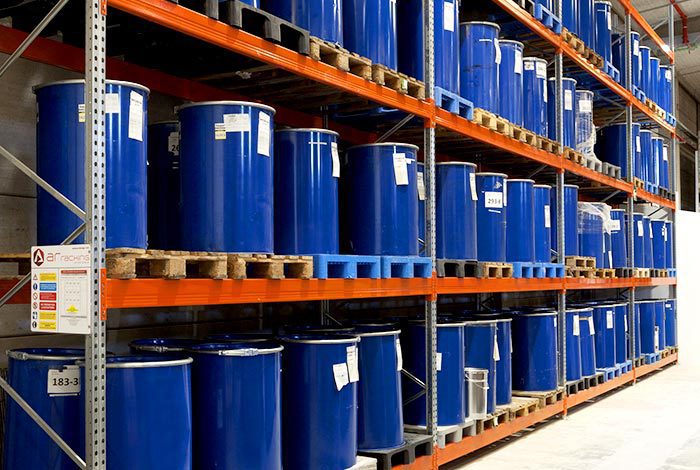The most important thing is to keep chemicals in storage

Safe storage and maintenance of chemicals in storage is a crucial component of the Health, Safety, and Environment (HSE) unit’s program. The physical and chemical properties of chemicals vary widely, and if they are not properly managed, stored, and labelled, they can result in dangerous or even destructive consequences. Therefore, it is crucial to carefully handle and label chemicals to prevent any potential harm, such as toxic gas generation, fires, and explosions that may lead to human deaths, financial damage, or environmental risks. Many companies use a variety of chemicals to carry out their business activities. Chemical raw materials, semi-finished products and finished products assigned to chemical warehouses must meet safety requirements.
Use chemical labels to introduce materials
The first and most important step in the safe storage of hazardous chemicals is to identify all materials assigned to the warehouse to gain an understanding of their properties and hazards. Does this chemical have the potential to be flammable, toxic, or corrosive? Is it a reactive substance or a reactive substance to sunlight? Can it be used with other materials? Does it have a negative impact on the environment or aquaculture? To ensure users can read chemical labels and MSDS, it is important to use a suitable chemical label that identifies substances and lists associated hazards. To prevent most possible chemical hazards, it is important to store chemicals in a way that meets the standards of the Occupational Safety and Health Organization (OSHA).
Using material MSDS sheet
Once hazardous chemicals have been identified in storage, it is crucial to assess the risks associated with their storage, transportation, and use, in order to determine the appropriate measures for controlling the risks. To access information about chemicals, MSDS sheets are provided by the manufacturer, importer, or supplier. These sheets detail important information such as storage requirements, potential reactions with other materials, and hazards associated with the chemical, including the risk of fire or explosion. However, in a chemical storage facility, additional factors such as quantity and storage data must also be considered.
The storage of hazard materials in warehouses
The characteristics of the materials stored in warehouses are responsible for many of the risks. Chemical warehousing has a level of risk that is determined by the following:
• The chemical family and volume of stored chemicals.
• Organizing and distributing chemicals in warehouse facilities.
• Storage conditions are influenced by both the environment (temperature, humidity, etc.) and equipment (displacement tools, containers, pallets, etc.).
• The employee’s working methods are related to occupational hazards prevention training.
The employee’s working methods are related to occupational hazards prevention training.
Some related details to safety conditions as described should be observed in the storage of chemicals.
Design and installation structure
To ensure safety, it is important to maintain safe intervals between chemicals, compatibility, storage, recommended transport equipment, and accumulation standards.
Chemical Storage Containers and Tankers
Monitoring systems for storage conditions (temperature and humidity) and protection systems (fire prevention) are required in installation as part of the warehouse safety and hazard prevention policy. Containers and storage tanks should be proportionate to the chemical properties of the material. For example, containers are made to store chemicals from steel or stainless steel, which benefits include low maintenance, durability, and high strength and high-density polyethylene which is flexible and low temperature resistant.
Periodic Inspection Requirements
In order to maintain safe conditions, chemical storage facilities must undergo regular periodic inspections once they are operational.
